Many people in the photovoltaic industry or friends who are familiar with photovoltaic power generation know that investing in the installation of photovoltaic power plants on the roofs of residential or industrial and commercial plants can not only generate electricity and make money, but also have good income. In hot summer, it can also effectively reduce the indoor temperature of buildings. The effect of heat insulation and cooling.
According to the test of relevant professional institutions, the indoor temperature of buildings with photovoltaic power plants installed on the roof is 4-6 degrees lower than that of buildings without installation.
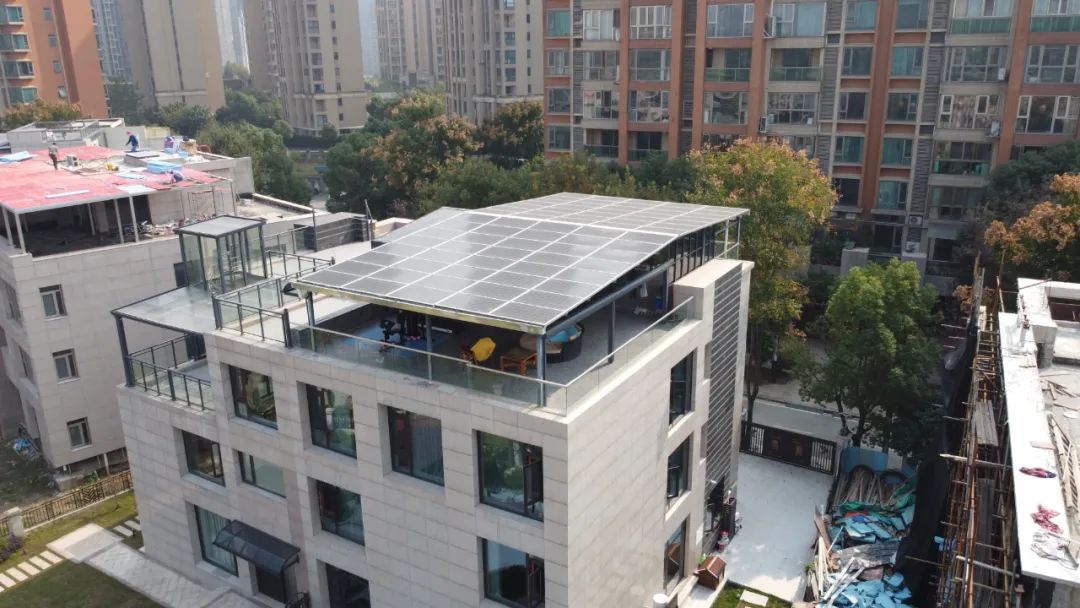
Can roof-mounted photovoltaic power plants really reduce indoor temperature by 4-6 degrees? Today, we will tell you the answer with three sets of measured comparative data. After reading it, you may have a new understanding of the cooling effect of photovoltaic power plants.
First of all, figure out how the photovoltaic power station can cool the building:
First of all, photovoltaic modules will reflect heat, sunlight illuminates photovoltaic modules, photovoltaic modules absorb part of the solar energy and convert it into electricity, and the other part of the sunlight is reflected by photovoltaic modules.
Secondly, the photovoltaic module refracts the projected sunlight, and the sunlight will be attenuated after the refraction, which effectively filters the sunlight.
Finally, the photovoltaic module forms a shelter on the roof, and the photovoltaic module can form a shade area on the roof, which further achieves the effect of thermal insulation and cooling of the roof.
Next, compare the data of three measured projects to see how much cooling the roof-mounted photovoltaic power station can cool.
1. National-level Datong Economic and Technological Development Zone Investment Promotion Center Atrium Lighting Roof Project
The more than 200 square meters roof of the atrium of the Investment Promotion Center of the National Datong Economic and Technological Development Zone was originally made of ordinary tempered glass lighting roof, which has the advantage of being beautiful and transparent, as shown in the figure below:
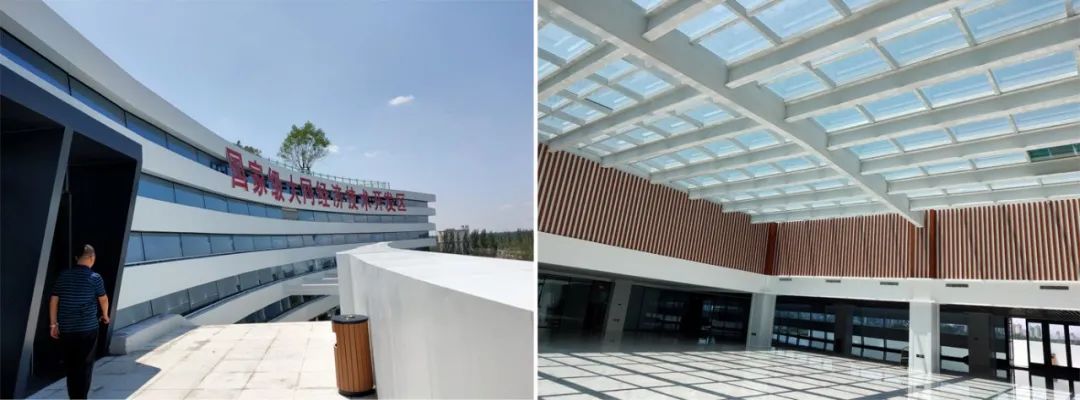
However, this kind of lighting roof is very annoying in summer, and it cannot achieve the effect of heat insulation. In summer, the scorching sun enters the room through the roof glass, and it will become extremely hot. Many buildings with glass roofs have such troubles.
In order to achieve the purpose of energy saving and cooling, and at the same time ensure the aesthetics and light transmittance of the building roof, the owner finally chose photovoltaic modules and installed them on the original glass roof.
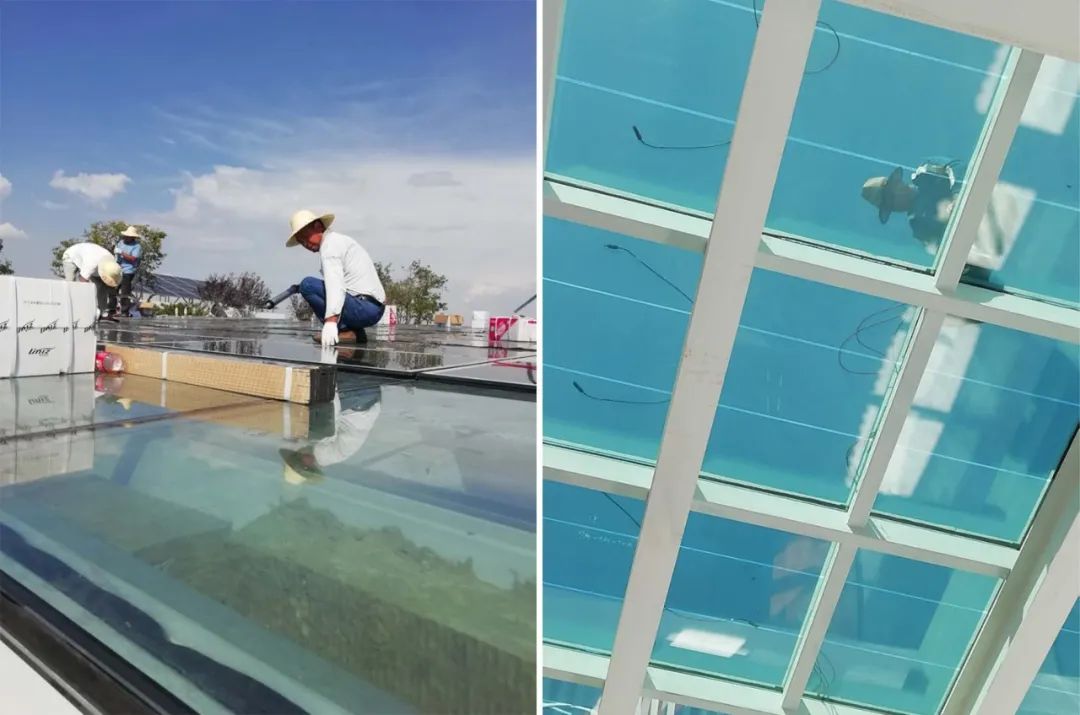
The installer is installing photovoltaic modules on the roof
After installing photovoltaic modules on the roof, what is the cooling effect? Take a look at the temperature detected by the construction workers at the same location on the site before and after installation:
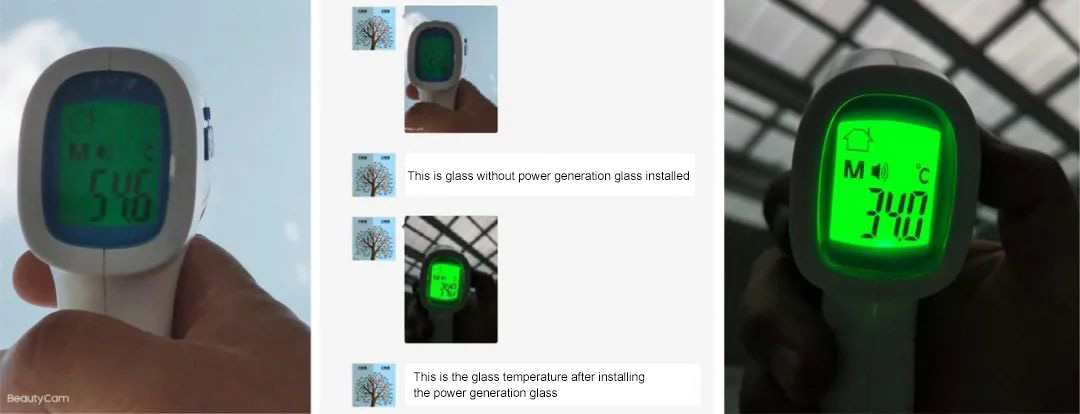
It can be seen that after the installation of the photovoltaic power station, the temperature of the inner surface of the glass dropped by more than 20 degrees, and the indoor temperature also dropped significantly, which not only greatly saved the electricity cost of turning on the air conditioner, but also achieved the effect of energy saving and cooling, and the photovoltaic modules on the roof will also absorb the solar energy. A steady stream of energy is converted into green electricity, and the advantages of saving energy and making money are very significant.
2. Photovoltaic tile project
After reading the cooling effect of photovoltaic modules, let’s take a look at another important photovoltaic building material-how is the cooling effect of photovoltaic tiles?
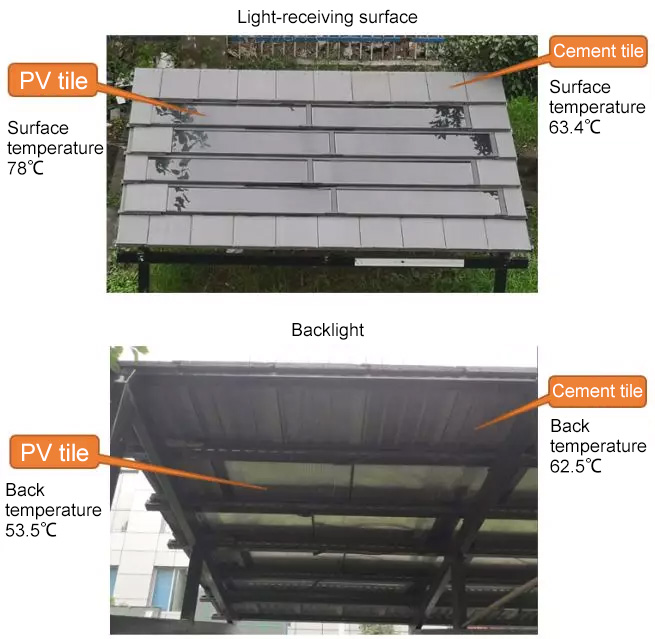
In conclusion:
1) The temperature difference between the front and back of the cement tile is 0.9°C;
2) The temperature difference between the front and back of the photovoltaic tile is 25.5°C;
3) Although the photovoltaic tile absorbs heat, the surface temperature is higher than that of the cement tile, but the back temperature is lower than that of the cement tile. It is 9°C cooler than ordinary cement tiles.
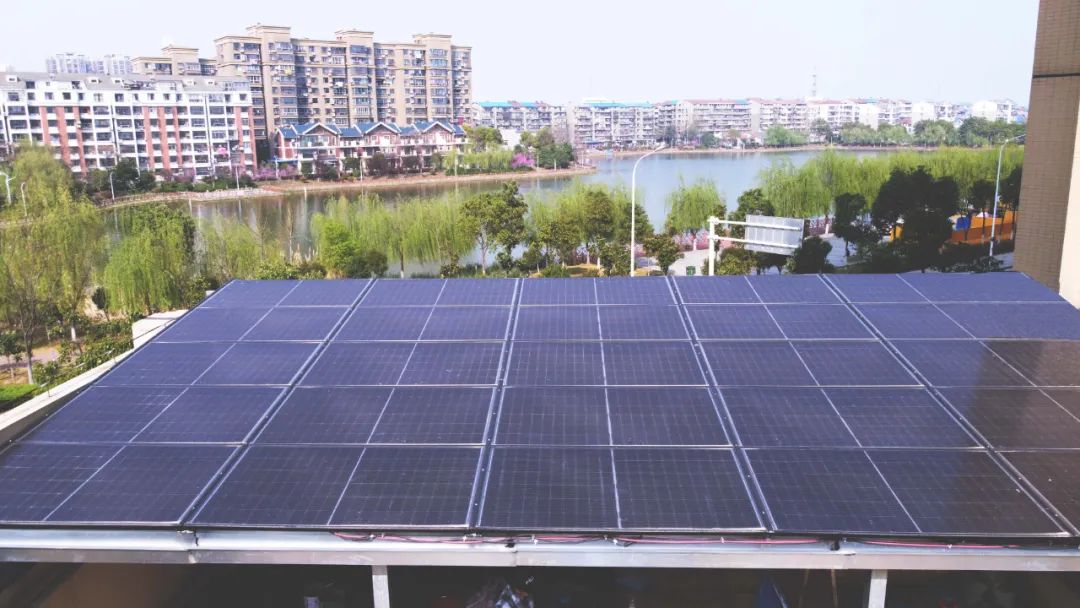
(Special note: Infrared thermometers are used in this data recording. Due to the color of the surface of the measured object, the temperature may be slightly deviated, but it basically reflects the surface temperature of the entire measured object and can be used as a reference.)
Under the high temperature of 40°C, at 12 noon, the roof temperature was as high as 68.5°C. The temperature measured on the surface of the photovoltaic module is only 57.5°C, which is 11°C lower than the roof temperature. The PV module’s backsheet temperature is 63°C, which is still 5.5°C lower than the roof temperature. Under the photovoltaic modules, the temperature of the roof without direct sunlight is 48°C, which is 20.5°C lower than that of the unshielded roof, which is similar to the temperature reduction detected by the first project.
Through the tests of the above three photovoltaic projects, it can be seen that the thermal insulation, cooling, energy saving and emission reduction effect of installing photovoltaic power plants on the roof is very significant, and don’t forget that there is a 25-year power generation income.
This is also the main reason why more and more industrial and commercial owners and residents choose to invest in the installation of photovoltaic power plants on the roof.
Post time: Mar-31-2023




